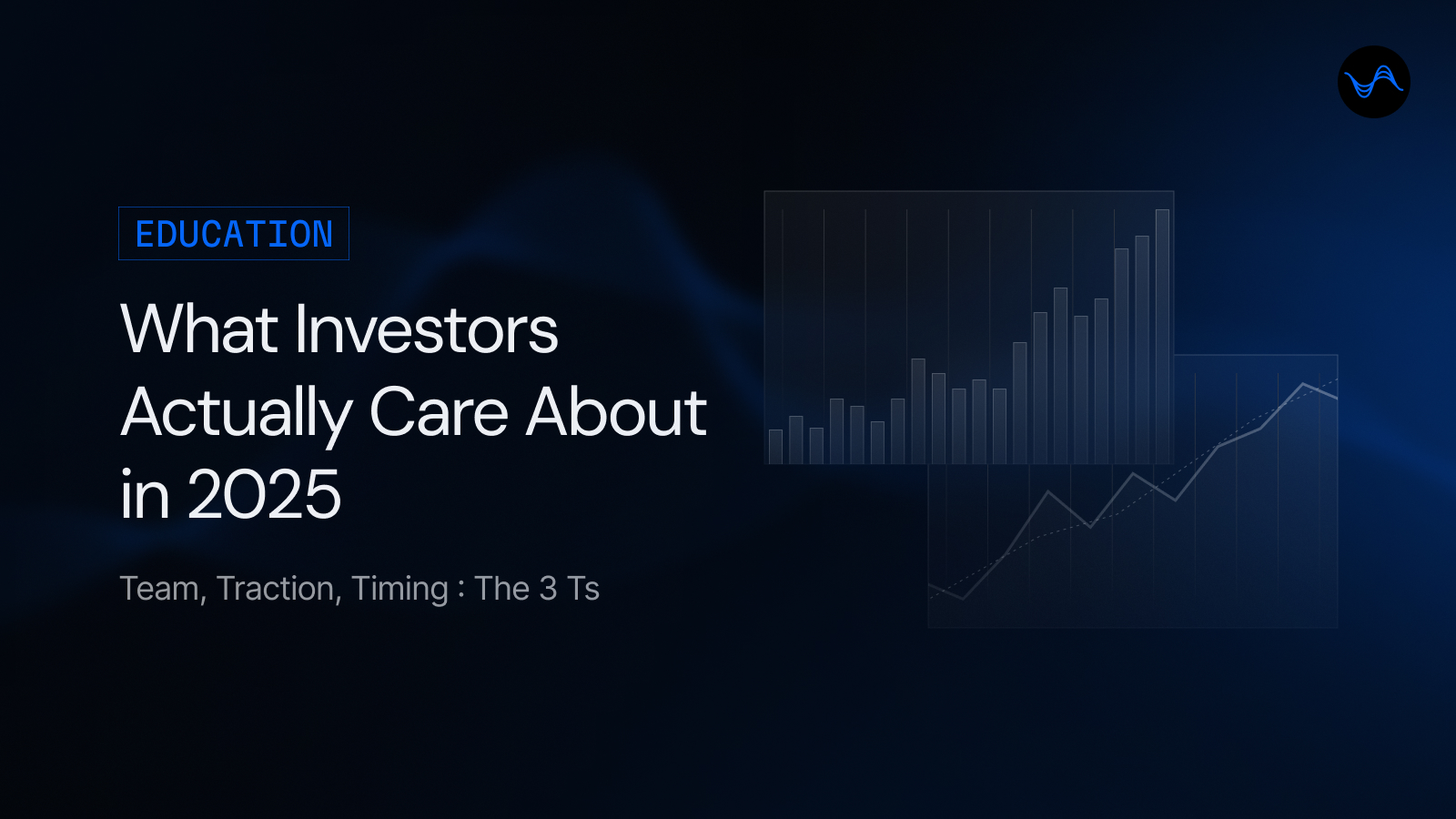What Investors Actually Care About in 2025: The 3-Ts
In crypto fundraising, the loudest voice is not always the one that gets funded. Here we share what the whales are looking for in 2025.


In crypto fundraising, the loudest voice is not always the one that gets funded. Foundations, accelerators, and investors are increasingly looking past surface-level announcements and market narratives and into the actual fundamentals of a project, especially in 2025’s more selective funding environment.
While a compelling narrative still matters, it cannot compensate for an unqualified team or unclear execution. So what do investors actually look for?
Team: A strong, proven founding group
The first filter most funds and foundation reviewers apply is straightforward: does this team have a verifiable track record?
Teams that have shipped products, scaled active user bases, or built infrastructure, either in Web2 or Web3, demonstrate a reduced execution risk. This means investors aren’t betting on potential, they’re betting on people who have already proven they can deliver.
Example: Lighter is a strong case. Their founding team includes experienced builders with a deep background in trading infrastructure and cryptographic systems. The product is a zk-powered, non-custodial perpetuals exchange, built from day one to solve real pain points around transparency and execution.
That depth is what attracted backers like a16z, Lightspeed, and Coatue. By September 2025, while still invite-only, Lighter was already handling over $2.8 billion in monthly trading volume and had surpassed $7 billion in cumulative perps volume. That kind of traction only happens when experienced teams execute against real market demand.
Traction: Actual progress - not just marketing
Foundations are tightening requirements for both grants and equity/token funding. They now expect:
- On-chain usage data, DAUs, or revenue figures
- Active B2B/B2C partnerships or signed LOIs
- A mainnet product, beta launch, or functioning prototype
Followers, likes, or a polished pitch deck do not equate to traction. Decision-makers are looking for tangible results that prove real users exist and value is being created. Community size and on-chain engagement also signal genuine growth potential.
Importantly, most serious investors no longer pay attention to FTVs (Fair Token Valuations). The market has matured, funds understand that FTVs are fragile, easily manipulated, and often misleading. They evaluate based on actual performance and real market activity.
Narrative is not the foundation. It is the amplifier.
Hot sectors like DePIN, RWAs, and AI will get you more meetings, but they will not close them. In every case, the project must answer:
- Why is this product needed right now?
- Why is this team the one to build it?
- Why is the user demand durable?
Example: Aster is a clear case of narrative acting as an amplifier, not the foundation. Backed by YZi Labs and launching in the Binance ecosystem, it entered the market during peak interest in decentralized perpetuals. But what made the project credible was its follow-through: over $137 billion in cumulative trading volume, $413 million in TVL, and $15 million+ in fees generated. That kind of traction proves they were building more than hype.
(ref: https://defillama.com/protocol/perps/aster)
Timing: It still matters, but don't wait too long
Funding is cyclical. Grant committees and venture teams have bigger risk appetite when market sentiment is high. But waiting indefinitely for perfect conditions can cost valuable momentum.
Early-stage projects that demonstrate core usage or clear market pull can raise in any market environment.
Strong fundamentals convince investors, regardless of cycle timing.
The idea matters least
The idea, contrary to popular belief, is the least important part of the pitch. Strong ideas are common. What’s uncommon is precise execution, capital efficiency, and adaptability.
Investors know this. They’ve seen hundreds of brilliant decks turn into dead Discord channels.
Execution is what gets funded. A working prototype with user feedback beats an ambitious roadmap with zero usage.
Final Thought
In today's market, capital is still available, but only for those who prove they can use it well. The days of raising on narratives alone are over.
Investors are prioritizing execution over ideas, real usage over hype, and experienced builders over hopeful founders. The strongest projects are not the ones shouting the loudest, but the ones building what the market actually needs, with the track record, traction, and timing to back it up.
If you are serious about raising in this cycle, focus on the fundamentals.
.png)


.png)

